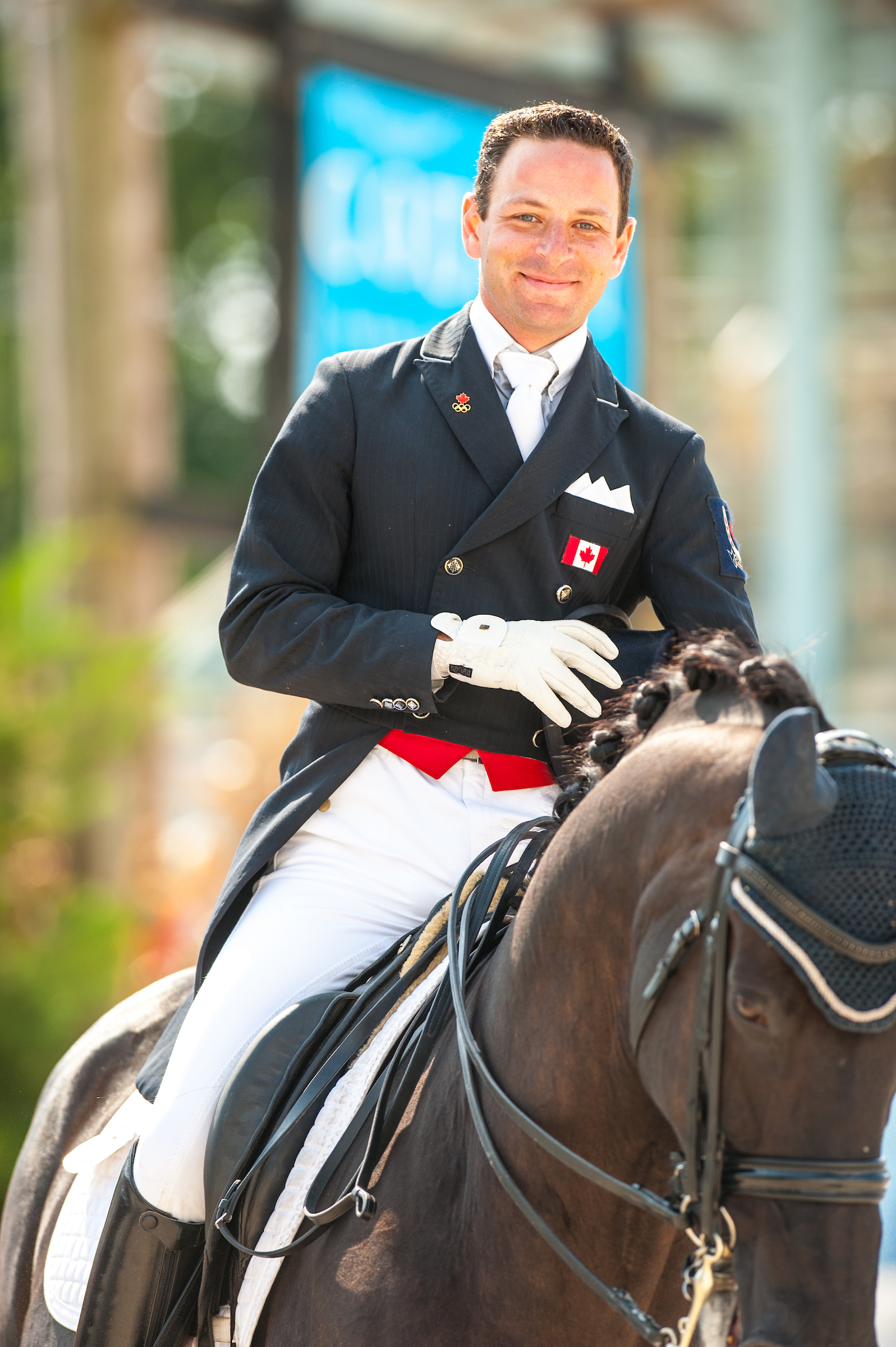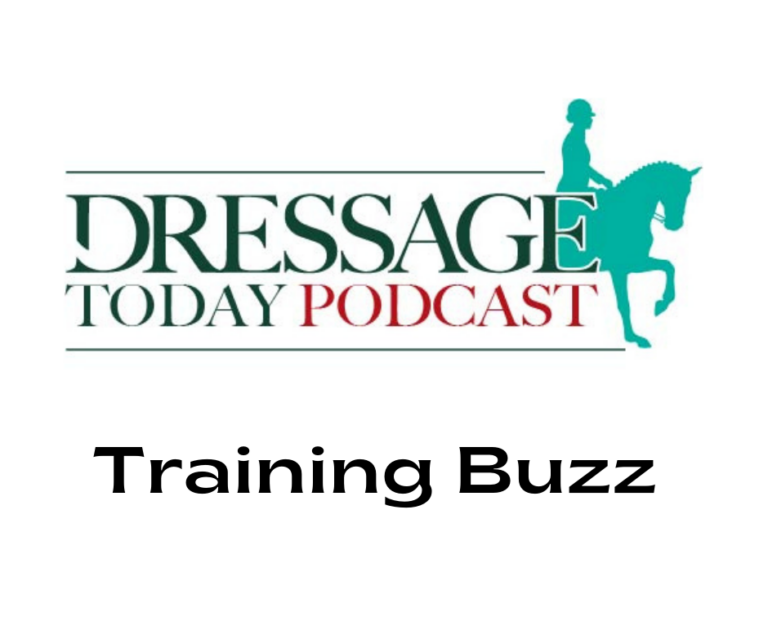It takes hard work, determination and incredible luck to win a Grand Prix class at Dressage at Devon. For Olympian David Marcus, who won three classes on two horses in 2012, you could say it was nothing short of a miracle. The year was full of less-than-ideal circumstances for Marcus and his two mounts, but he proved that careful planning and a strong constitution can get you back in the winner’s circle. Despite Don Kontes’ fall 2011 colic surgery and Chrevi’s Capital’s disqualifying spook at the 2012 Olympic Games, Marcus piloted both horses down centerline in the famed Dixon Oval to Grand Prix wins. Dressage Today sat down with Marcus to hear how he beat the odds in 2012.

Last year at Devon, you were earning some of the best scores of your career and were repeatedly in the blues. What are some of your secrets to show success?
The more I learn, the more I understand how important confidence plays a part in my riding and showing. Each competition I enter, I am able to make small adjustments to my routine that help my performance. Each time this works I get a bit more confident that I am going in the right direction. This confidence translates to my horse and hopefully to my performance in the ring.
One of your 2012 Devon mounts, Don Kontes, was coming back from a colic surgery in 2011. Talk about the program you followed to get him back in such peak form.
This is true. In the fall of 2011 Don Kontes underwent colic surgery. Thankfully through the wonderful veterinarians at?Milton Equine Hospital in Campbellville, Ontario, all went smoothly, and the following winter “DK,” as we call him, was back in full swing and starting?in his first Grand Prix. The time he had off allowed us to?solidify our partnership, as I hand-walked and catered to him, constantly. Once his sutures started to heal, I began to walk him in side reins and then in long lines. This allowed him to believe he was starting back in work and maintain his topline without stressing him. Once he got a bit further along in his recovery, I began to work on the piaffe this way. When it was time to bring him back, he had barely lost any fitness or muscle and was more clear in his understanding of the piaffe.
Your confidence in the Dixon Oval at Devon made it easy to forget that Chrevi’s Capital had a spook at the Olympics. How do you work past the anxiety of it happening again as successfully as you did?
Capital had a real fright at the Olympics. We all understand that. However, I never stopped believing in him. He’s actually a fairly laid-back horse, and not typically spooky. I knew that the Olympics for him was a perfect storm of things happening to create his spook. This would be nearly impossible to duplicate. After the Olympics we took a short break and entered him in some smaller shows to build his confidence and mine again in the competition ring. It obviously worked because he handled the atmosphere in the Dixon Oval like the champion I know he is.
It was hard to ignore the Canadian spirit on the sidelines at Dressage at Devon last year. It seemed like every rider had the rest of the team cheering them on. Talk about the teamwork we all noticed.
Let’s face it: Our country is significantly smaller in population than the United States. It is also, sadly, shallower in the depth of our Grand Prix riders and horses. However, we are not without great-quality horses and riders as proven by the significantly impressive results from last year’s Dressage at Devon, where Canadians won classes from the Pony Division through the Juniors and Young Riders, right through to our clean sweep of all Grand Prix divisions. We are proud of this and extremely supportive of each other.
Can you explain your typical warm-up at a show like Devon?
I am very systematic about my training and this doesn’t change at a horse show. I typically arrive the day before the jog and give my horses a light school and the opportunity to see everything in the venue. The day of competition, I warm up for each class with the same intention as I have on a daily basis. The only difference is that I shorten my routine slightly to allow for enough energy to produce a test at the end of my ride. The only difference a show like Dressage at Devon has is that some of the competitions are at night. Since I don’t train my horses at home at night, on these competition days, I take my horses out for a light school in the morning. I believe this helps maintain the routine of their lives. Otherwise, they may think they’re having that day off. Plus, it becomes too long in between the times that they train. For instance, if I ride at 10 a.m. in the Grand Prix on Friday and 10 p.m. in the freestyle on Saturday, if I don’t school them Saturday morning, it’s 36 hours between training times. This is out of the ordinary for them.
What are some less-obvious stable-management rules that you like to keep for your string of competition horses?
I don’t think I do too much out of the ordinary. My horses go out three times a day: once in the paddock, once being ridden and once hand-walked or grazed. Each horse has one amazing groom who takes care of every aspect of their lives and me. This keeps things consistent for them. The one thing I may do differently than others is that my horses see the vet after each horse show as a preventive measure. At competitions we push our horses to be the best they can be. They are sometimes on different footing than we have at home and are in different stalls. After each horse show I like my vet to check my horses before I continue training to make sure that they haven’t strained anything while away. I believe this proactive thinking is one of the reasons my horses have, knock wood, been healthy and happy.
What is the most unusual dressage exercise you like to practice? We can never resist the opportunity for a training tip.
This sounds simple, but I would say corners. I believe corners are a great opportunity not only for training but also a great reflection of the training. Before I ride every corner I think to myself, What do I want out of this corner? Can I collect, bend and add impulsion in the corner? How balanced is my horse in the corner? Am I prepared for what’s coming after? I believe that by asking these questions to myself and my horse, and by knowing what answers I want, I can be prepared to do everything else necessary.











